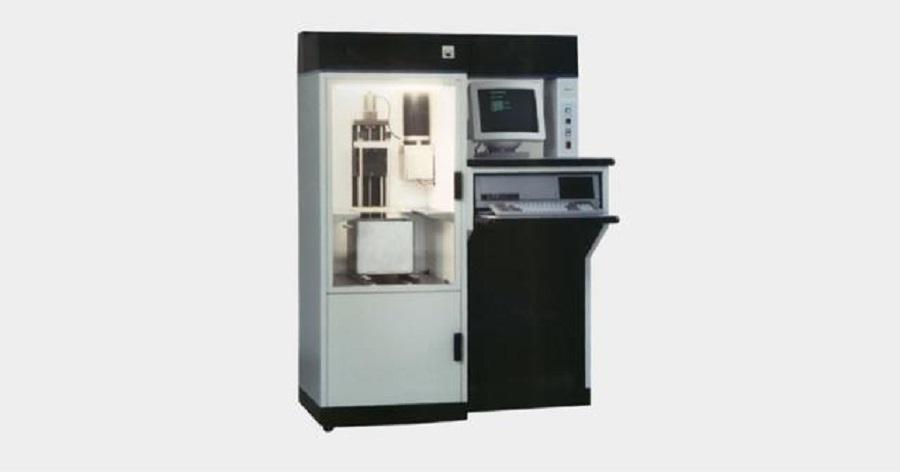Editor-in-Chief
- FMA
- The Fabricator
- FABTECH
- Canadian Metalworking
Our Publications
Categories
- Additive Manufacturing
- Aluminum Welding
- Arc Welding
- Assembly and Joining
- Automation and Robotics
- Bending and Forming
- Consumables
- Cutting and Weld Prep
- Electric Vehicles
- En Español
- Finishing
- Hydroforming
- Laser Cutting
- Laser Welding
- Machining
- Manufacturing Software
- Materials Handling
- Metals/Materials
- Oxyfuel Cutting
- Plasma Cutting
- Power Tools
- Punching and Other Holemaking
- Roll Forming
- Safety
- Sawing
- Shearing
- Shop Management
- Testing and Measuring
- Tube and Pipe Fabrication
- Tube and Pipe Production
- Waterjet Cutting
Industry Directory
Webcasts
Podcasts
FAB 40
Advertise
Subscribe
Account Login
Search
Remembrance of something past
I recall seeing 3D printing for the first time and trying to assess its impact on manufacturing
- By Don Nelson
- November 23, 2018
In the opening chapter of French author Marcel Proust’s seven-volume masterpiece “Remembrance of Things Past,” the narrator eats a morsel of cake dipped in tea. Its taste releases a flood of memories from 30 years before. Proust follows up the narrator’s remembrance with 2,200 pages that explore the effects of time’s passage on human relationships.
I had a more humdrum eat-the-cake moment recently while reading a white paper published by 3D Systems. The paper explains how the company’s tool-less digital molding process was made possible by a technology patented 30 years ago by the company’s co-founder, Chuck Hull, inventor of the stereolithography (SLA) apparatus.
I flashed back to a shop visit I made in the late 1980s to see a then-new technology in action: the SLA-1, the first commercialized additive manufacturing system. (Note: I won’t need 2,200 pages to tell my story; 220 words oughta do it.)
The suburban Chicago shop machined molds and prototypes. Its owner took great—and justifiable—pride in operating the latest 3-axis CNC mills, manufacturing software, and finishing and metrology equipment. After a quick shop tour, the owner said, “Let’s go see the thing.”
He led me to a corner of the shop and pulled back a black curtain covering the entrance to a small, dark room. In the center was the “thing,” an SLA that consisted of a computer, build chamber, laser, and tank filled with amber liquid.
Shop personnel hovered over the SLA like our early ancestors huddled around fire. I was transfixed, watching for nearly an hour as the part being 3D-printed took form in the photopolymer resin.
While driving back to my office, I was thoroughly convinced I had witnessed the future of manufacturing—and seen the immediate beginning of the end for milling, turning, drilling, and all the other subtractive processes I was familiar with.
I was wrong. The “end” didn’t come immediately nor has it come yet.
But sales of AM systems have increased steadily the past three decades. They quickly became the go-to equipment for rapid-prototyping shops, and in the past six to eight years have found a home in all kinds of manufacturing companies.
Wohlers Associates, which produces an annual report on the state of the additive manufacturing industry, estimates the global AM market was $5.17 billion in 2015, $6.06 billion in ’16, and $7.30 billion in ’17.

3D Systems’ co-founder, Chuck Hull, introduced the SLA-1 stereolithography apparatus in 1987. Credit: 3D Systems.
Moreover, Wohlers and other experts project AM will experience anywhere from steady to robust growth in the coming years.
Does that mean AM eventually will supplant subtractive and other conventional processes as the predominate way parts are produced? No. And certainly not in my lifetime.
But I’ve been wrong before.About the Author

Don Nelson
2135 Point Blvd.
Elgin, IL 60123
(815)-227-8248
About the Publication
- Podcasting
- Podcast:
- The Fabricator Podcast
- Published:
- 04/16/2024
- Running Time:
- 63:29
In this episode of The Fabricator Podcast, Caleb Chamberlain, co-founder and CEO of OSH Cut, discusses his company’s...
- Trending Articles
- Industry Events
16th Annual Safety Conference
- April 30 - May 1, 2024
- Elgin,
Pipe and Tube Conference
- May 21 - 22, 2024
- Omaha, NE
World-Class Roll Forming Workshop
- June 5 - 6, 2024
- Louisville, KY
Advanced Laser Application Workshop
- June 25 - 27, 2024
- Novi, MI


























